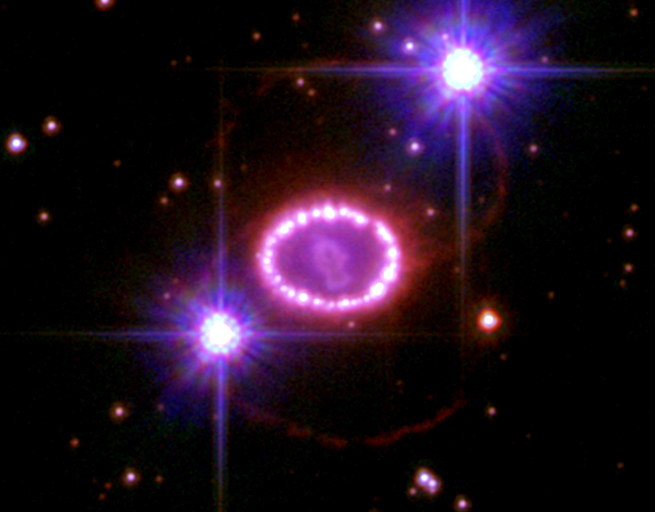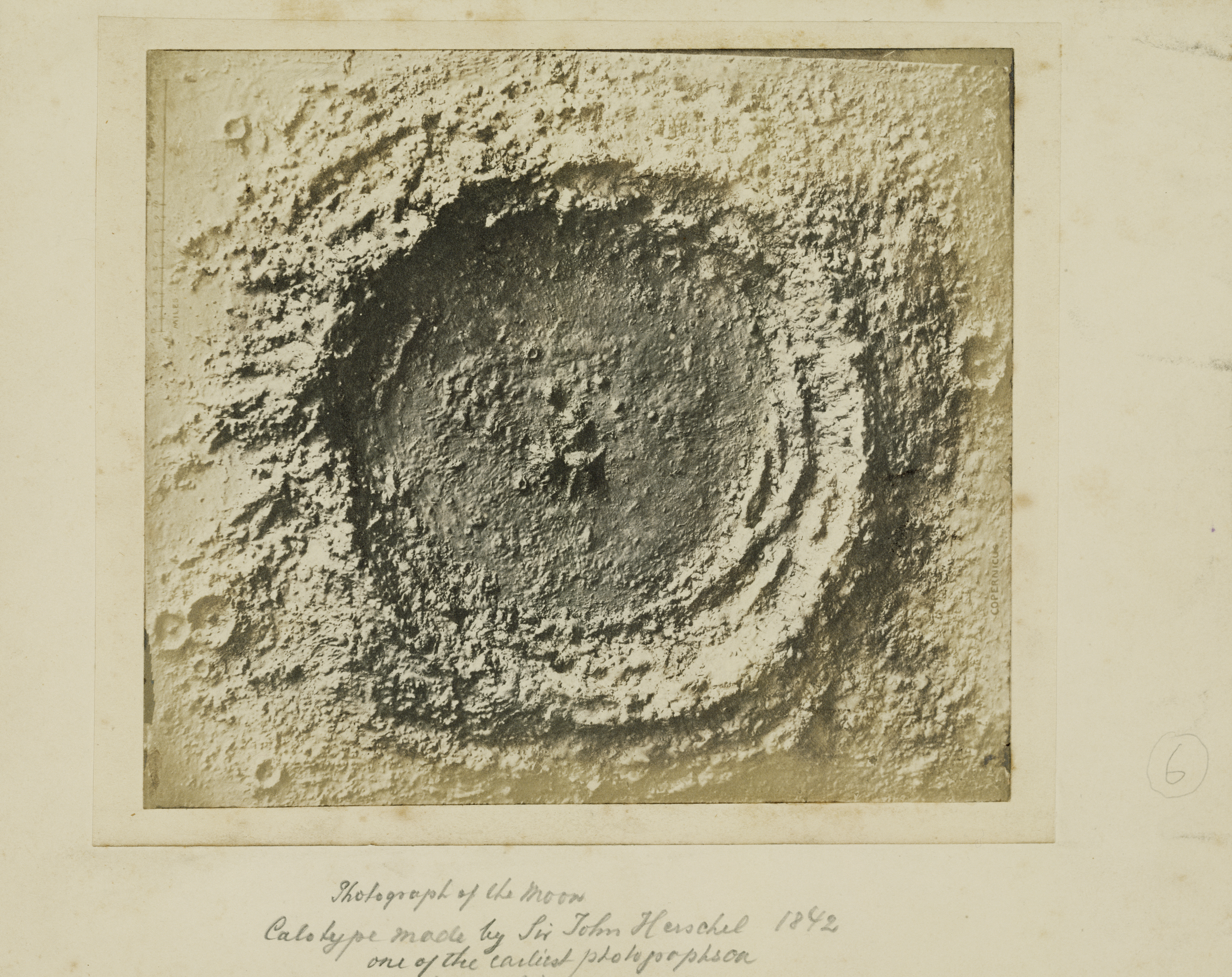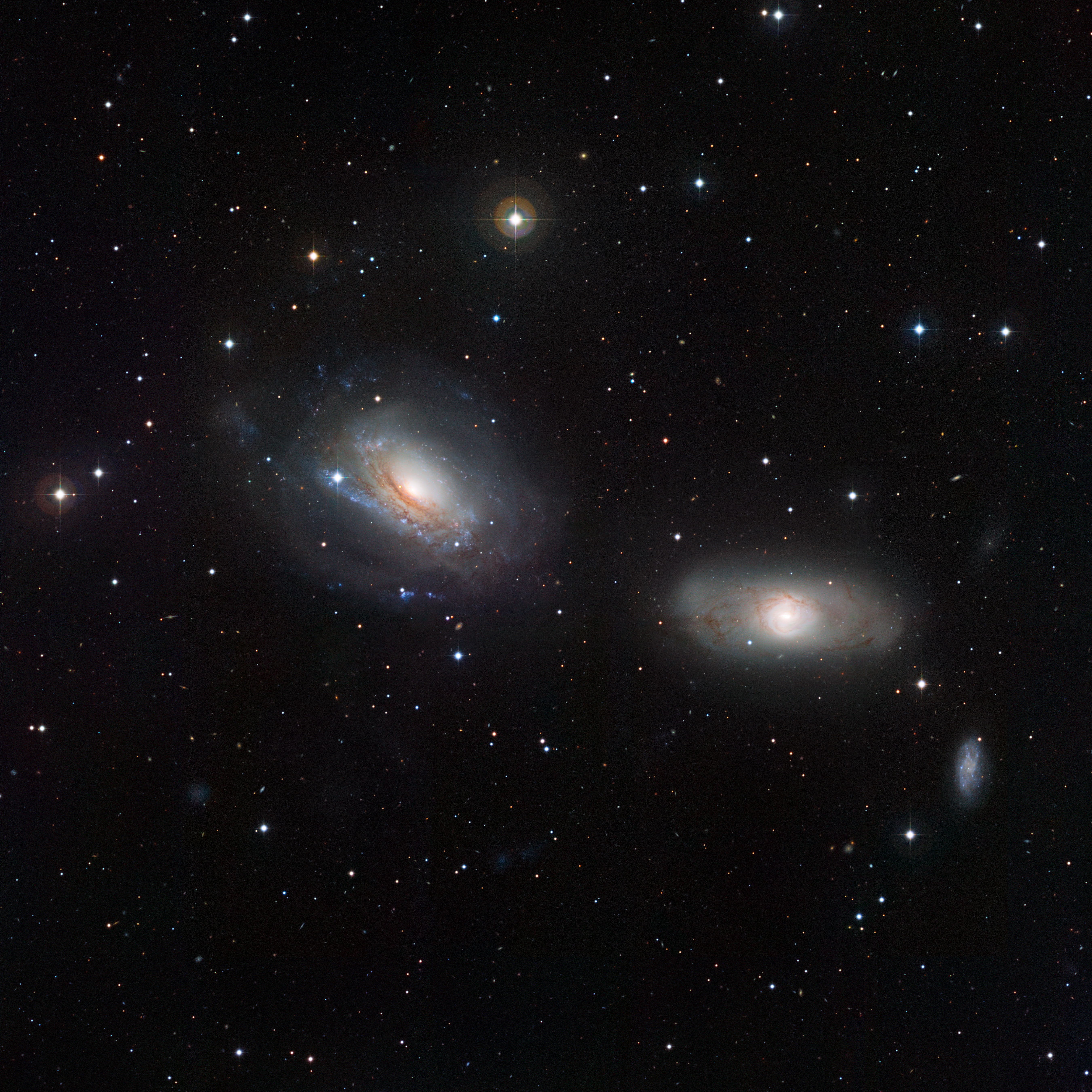|
NGC 6845
NGC 6845 (also known as Klemola 30) is an interacting system of four galaxies in the constellation Telescopium. The cluster has certain similarities with Stephan's Quintet. Its distance is estimated to be about 90 Mpc. The components of the galaxy cluster are the two spiral galaxies NGC 6845A and NGC 6845B as well as the two lenticular galaxies NGC 6845C and NGC 6845D. The four galaxies occupy an area of about 4' x 2' in the sky. The largest galaxy in this compact galaxy cluster is NGC 6845A, a barred spiral galaxy. SN 2008DA was a Type II supernova observed in NGC 6845A in June 2008. The dwarf galaxy ATCA J2001-4659, which is found around 4.4' northeast of NGC 6845B, was identified as a companion of NGC 6845. NGC 6845 was discovered on July 7, 1834 by John Herschel Sir John Frederick William Herschel, 1st Baronet (; 7 March 1792 – 11 May 1871) was an English polymath active as a mathematician, astronomer, chemist, inventor, experimental photographer who inv ... [...More Info...] [...Related Items...] OR: [Wikipedia] [Google] [Baidu] |
Gemini Observatory
The Gemini Observatory is an astronomical observatory consisting of two 8.1-metre (26.6 ft) telescopes, Gemini North and Gemini South, which are located at two separate sites in Hawaii and Chile, respectively. The twin Gemini telescopes provide almost complete coverage of both the northern and southern skies. They are currently among the largest and most advanced optical/infrared telescopes available to astronomers. ''(See List of largest optical reflecting telescopes)''. The National Science Foundation (NSF) of the United States, the National Research Council of Canada, CONICYT of Chile, MCTI of Brazil, and MCTIP of Argentina own and operate the Gemini Observatory. The NSF is currently (2017) the majority partner, contributing approximately 70% of the funding needed to operate and maintain both telescopes. The operations and maintenance of the observatory is managed by the Association of Universities for Research in Astronomy (AURA), through a cooperative agreement with NSF. ... [...More Info...] [...Related Items...] OR: [Wikipedia] [Google] [Baidu] |
Telescopium
Telescopium is a minor constellation in the southern celestial hemisphere, one of twelve named in the 18th century by French astronomer Nicolas-Louis de Lacaille and one of several depicting scientific instruments. Its name is a Latinized form of the Greek word for telescope. Telescopium was later much reduced in size by Francis Baily and Benjamin Gould. The brightest star in the constellation is Alpha Telescopii, a blue-white subgiant with an apparent magnitude of 3.5, followed by the orange giant star Zeta Telescopii at magnitude 4.1. Eta and PZ Telescopii are two young star systems with debris disks and brown dwarf companions. Telescopium hosts two unusual stars with very little hydrogen that are likely to be the result of two merged white dwarfs: PV Telescopii, also known as HD 168476, is a hot blue extreme helium star, while RS Telescopii is an R Coronae Borealis variable. RR Telescopii is a cataclysmic variable that brightened as a nova to magnitude 6 in 1948. ... [...More Info...] [...Related Items...] OR: [Wikipedia] [Google] [Baidu] |
Stephan's Quintet
Stephan's Quintet is a visual grouping of five galaxies of which four form the first compact galaxy group ever discovered. The group, visible in the constellation Pegasus, was discovered by Édouard Stephan in 1877 at the Marseille Observatory. The group is the most studied of all the compact galaxy groups. The brightest member of the visual grouping (and the only non-member of the true group) is NGC 7320, which has extensive H II regions, identified as red blobs, where active star formation is occurring. Four of the five galaxies in Stephan's Quintet form a physical association, a true galaxy group, Hickson Compact Group 92, and will likely merge with each other. Radio observations in the early 1970s revealed a filament of emission between the galaxies in the group. This same region is also detected in the faint glow of ionized atoms seen in the visible part of the spectrum as a green arc. Space telescopes have provided new insight into the nature of the filament, which is no ... [...More Info...] [...Related Items...] OR: [Wikipedia] [Google] [Baidu] |
Barred Spiral Galaxy
A barred spiral galaxy is a spiral galaxy with a central bar-shaped structure composed of stars. Bars are found in about two thirds of all spiral galaxies, and generally affect both the motions of stars and interstellar gas within spiral galaxies and can affect spiral arms as well. The Milky Way Galaxy, where the Solar System is located, is classified as a barred spiral galaxy. Edwin Hubble classified spiral galaxies of this type as "SB" (spiral, barred) in his Hubble sequence and arranged them into sub-categories based on how open the arms of the spiral are. SBa types feature tightly bound arms, while SBc types are at the other extreme and have loosely bound arms. SBb-type galaxies lie in between the two. SB0 is a barred lenticular galaxy. A new type, SBm, was subsequently created to describe somewhat irregular barred spirals, such as the Magellanic Clouds, which were once classified as irregular galaxies, but have since been found to contain barred spiral structures. Among o ... [...More Info...] [...Related Items...] OR: [Wikipedia] [Google] [Baidu] |
Type II Supernova
A Type II supernova (plural: ''supernovae'' or ''supernovas'') results from the rapid collapse and violent explosion of a massive star. A star must have at least 8 times, but no more than 40 to 50 times, the mass of the Sun () to undergo this type of explosion. Type II supernovae are distinguished from other types of supernovae by the presence of hydrogen in their spectra. They are usually observed in the spiral arms of galaxies and in H II regions, but not in elliptical galaxies; those are generally composed of older, low-mass stars, with few of the young, very massive stars necessary to cause a supernova. Stars generate energy by the nuclear fusion of elements. Unlike the Sun, massive stars possess the mass needed to fuse elements that have an atomic mass greater than hydrogen and helium, albeit at increasingly higher temperatures and pressures, causing correspondingly shorter stellar life spans. The degeneracy pressure of electrons and the energy generated by the ... [...More Info...] [...Related Items...] OR: [Wikipedia] [Google] [Baidu] |
John Herschel
Sir John Frederick William Herschel, 1st Baronet (; 7 March 1792 – 11 May 1871) was an English polymath active as a mathematician, astronomer, chemist, inventor, experimental photographer who invented the blueprint and did botanical work. Herschel originated the use of the Julian day system in astronomy. He named seven moons of Saturn and four moons of Uranus – the seventh planet, discovered by his father Sir William Herschel. He made many contributions to the science of photography, and investigated colour blindness and the chemical power of ultraviolet rays. His ''Preliminary Discourse'' (1831), which advocated an inductive approach to scientific experiment and theory-building, was an important contribution to the philosophy of science. Early life and work on astronomy Herschel was born in Slough, Buckinghamshire, the son of Mary Baldwin and astronomer William Herschel. He was the nephew of astronomer Caroline Herschel. He studied shortly at Eton ... [...More Info...] [...Related Items...] OR: [Wikipedia] [Google] [Baidu] |
NGC Objects
The ''New General Catalogue of Nebulae and Clusters of Stars'' (abbreviated NGC) is an astronomical catalogue of deep-sky objects compiled by John Louis Emil Dreyer in 1888. The NGC contains 7,840 objects, including galaxies, star clusters and emission nebulae. Dreyer published two supplements to the NGC in 1895 and 1908, known as the ''Index Catalogues'' (abbreviated IC), describing a further 5,386 astronomical objects. Thousands of these objects are best known by their NGC or IC numbers, which remain in widespread use. The NGC expanded and consolidated the cataloguing work of William and Caroline Herschel, and John Herschel's '' General Catalogue of Nebulae and Clusters of Stars''. Objects south of the celestial equator are catalogued somewhat less thoroughly, but many were included based on observation by John Herschel or James Dunlop. The NGC contained multiple errors, but attempts to eliminate them were made by the ''Revised New General Catalogue'' (RNGC) by Jack W. ... [...More Info...] [...Related Items...] OR: [Wikipedia] [Google] [Baidu] |
Interacting Galaxies
Interacting galaxies (''colliding galaxies'') are galaxies whose gravitational fields result in a disturbance of one another. An example of a minor interaction is a satellite galaxy disturbing the primary galaxy's spiral arms. An example of a major interaction is a galactic collision, which may lead to a galaxy merger. Satellite interaction A giant galaxy interacting with its satellites is common. A satellite's gravity could attract one of the primary's spiral arms. Alternatively, the secondary satellite can dive into the primary galaxy, as in the Sagittarius Dwarf Elliptical Galaxy diving into the Milky Way. That can possibly trigger a small amount of star formation. Such orphaned clusters of stars were sometimes referred to as "blue blobs" before they were recognized as stars. Galaxy collision Colliding galaxies are common during galaxy evolution. The extremely tenuous distribution of matter in galaxies means these are not collisions in the traditional sense of the word ... [...More Info...] [...Related Items...] OR: [Wikipedia] [Google] [Baidu] |
Spiral Galaxies
Spiral galaxies form a class of galaxy originally described by Edwin Hubble in his 1936 work ''The Realm of the Nebulae''Alt URL pp. 124–151) and, as such, form part of the Hubble sequence. Most spiral galaxies consist of a flat, rotating disk containing s, gas and dust, and a central concentration of stars known as the bulge ... [...More Info...] [...Related Items...] OR: [Wikipedia] [Google] [Baidu] |








